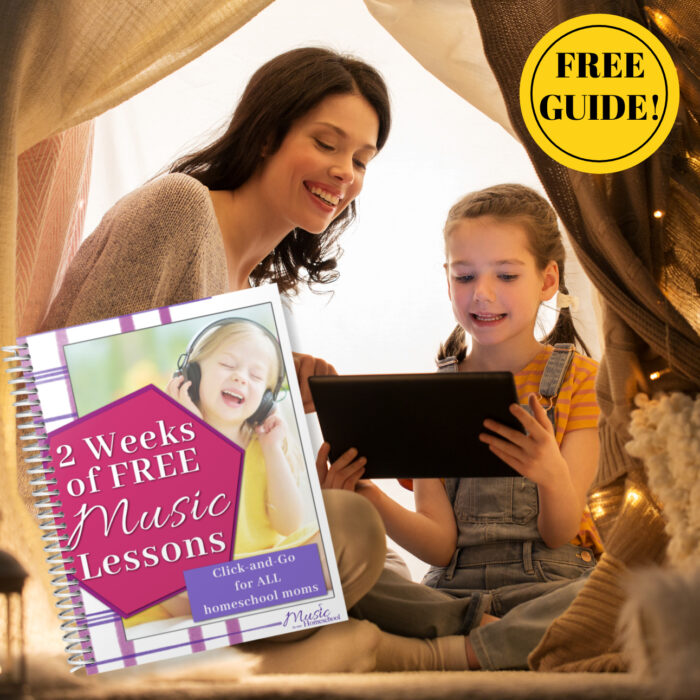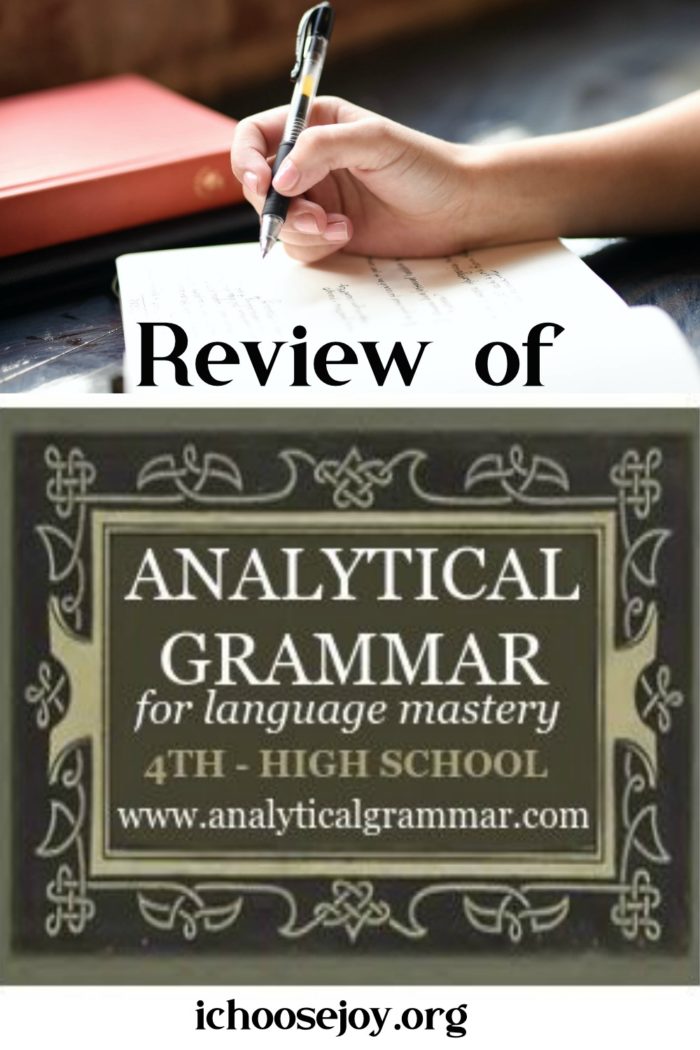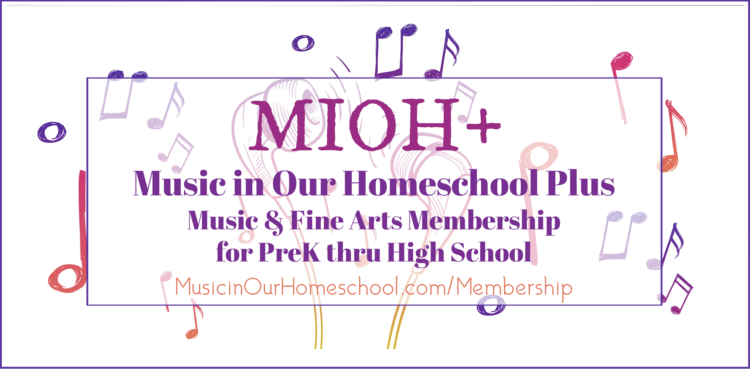Review of Analytical Grammar
[Today's review of Analytical Grammar was written by contributor Michelle Habrych.]
Teaching grammar to your kids can be difficult if you don’t know where to begin. Often we piece together grammar lessons, not teaching in any real sequence. We may even start to wonder “What’s the point?” After years of this, I discovered Analytical Grammar at a homeschool conference. At the time I was not looking for a program at all, but once I heard how it worked, I knew it was what I wanted for my kids. Read on for a review of Analytical Grammar!
Disclosure: I get commissions for purchases made through affiliate links in this post.

Review of Analytical Grammar
Analytical Grammar was designed by Robin Finley while she was a language arts teacher. She developed her system over 12 years of classroom usage. She created it when her school would not order her another set of grammar books for her classes, telling her that grammar wasn’t important to make good writers. Analytical Grammar was first sold in 1996 when a private school asked Robin if her materials were for sale. I’m so glad she said yes.
It's Sequential
The program is designed to be taught sequentially, building concept upon concept, similar to the way math is taught. You would not move your student ahead to multiplication until he’s mastered addition, right? The way Analytical Grammar is written is logical too. Students start with the basics, each week building upon the previous, to help understanding. Students learn parsing (labeling parts of a sentence) and diagramming, which leads to greater understanding of the parts of a sentence. Often we know something doesn’t “sound” right, but we never learned the rules about forming sentences.
Analytical Grammar contains 35 units, which may be spread out or done all in one school year. Verbals—participial phrases, gerunds, and infinitives—are fully explained. Clauses are easier to understand too. All eleven comma rules are taught with exercises for students to practice putting them in, once they understand the why behind the rules.
How to Deal With Struggles
Both of my teenagers have completed Analytical Grammar. My son did the entire book over the course of two years. My daughter started on the “seasons” path laid out in the curriculum. Analytical Grammar is divided into three seasons; it may be taught over the course of the middle school years, interspersed with reinforcement pages, vocabulary building, and writing. It does not have to be taught that way, but it may help younger learners.
We started when my daughter was in sixth grade. She completed the first season and the following year she completed the second season. Her struggle came in the third season when she struggled to put the rules into action from what she had learned the previous two years. Luckily for her, I was teaching a class using this curriculum and she joined us in season two to review and finish the program. We will continue to use the Analytical Grammar reinforcement books each year throughout high school.
Teaching Analytical Grammar at a Homeschool Co-op
I loved the program so much that I planned and taught it as a class at my homeschool co-op this past school year. My sophomore, who had already completed the program, was the aide in my class. He was able to help with some explanations for students. In the class, I taught all 35 lessons over the course of our 32-week school year (with a few seasonal breaks which gave students more time to complete the extra lessons). After some positive feedback, I will again be teaching the class for another group of seventh through twelfth graders this fall.
Pacing pros and cons
Completing the course in a year has its benefits and drawbacks. Doing it in a class setting means that a student who falls behind cannot easily get caught up. If you find your student is struggling with a concept, slow down. Take it at your own pace. It’s a good program.
A benefit of completing it in one year is the sheer volume of knowledge your student will gain regarding grammar, sentence composition, punctuation, and other usage. It will greatly improve writing if a student puts it all to use. “This class has not only been beneficial to my daughter's understanding and execution of proper grammar usage, the benefits have been shown in other areas as well. I have seen an increase in her reading comprehension as well as her writing skills,” said Kim, one of the moms whose child took my class this past year.
A “real game changer”
Chrissi, the mom of a middle school student in the class, said, “Analytical Grammar has been a real game-changer for my daughter academically. She thinks and analyzes sentences and their structure even when not doing homework. I can only foresee positive things in her high school career thanks to this class.”
Related Posts:
- Newest Cool Writing Tool
- Take Your Kids to Grammar Galaxy
- Ready, Eager, Able, and Determined to Read
- An “All About Reading” Success Story!
Michelle Habrych is a self-described grammar Nazi who delights in finding and correcting grammar mistakes. She home educates her two teenagers and works as a freelance writer, editor, and proofreader.
(Disclosure: This post contains affiliate links.)









I would love some tips on how you utilized your time in the co-op. I’m using the Junior Analytical Program for my 4-6th graders at the co-op. I bought the High School teacher guide as well to beef up the material for my advanced 5th grader. If you have any tips please let me know!
I’ll forward this question to Michelle who wrote this post to see if she can help you!
~Gena
Hi Hollie! I had actually planned to teach Jr AG for my co-op this year before COVID got in the way and messed up our group!!
I would have gone through each lesson with a video from Schoolhouse Rock to help auditory learners (the songs are catchy and helpful for memorizing definitions and examples of the parts of speech). I also found some great coloring pages from Teachers Pay Teachers I planned to use for reinforcement. It’s called Color by Grammar (Younger students), and it is published by Language Arts Classroom.
The main thing is to have them practice in class. Complete the first lesson together in class. Make sure they understand it before sending them home. Then I had them do the pages at home, using the teacher’s guide to check their work after each page completed. Then I had them bring in the completed tests, and we would grade each other’s tests. We used the white board for parsing and diagramming in class too.
I planned to do Mad Libs in class as well, to practice parts of speech, and play BINGO parts of speech.
As for using regular AG at home, the main difference is Season 2, which is not included in Jr AG. I planned to also teach Jr AG Mechanics with my students in the co-op.
Best wishes!!
Thanks for this extremely helpful response, Michelle!
~Gena